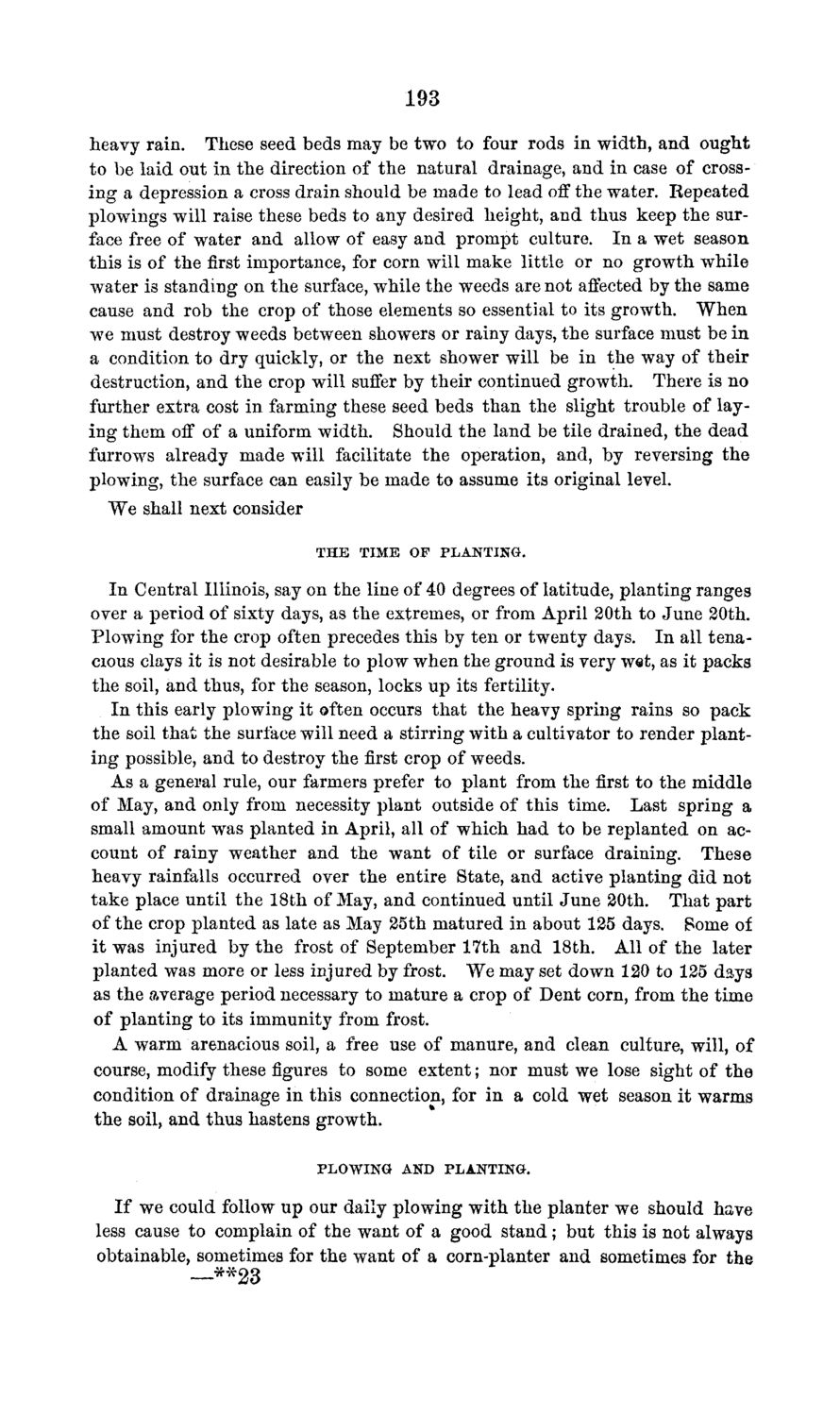| |
| |
Caption: Board of Trustees Minutes - 1869
This is a reduced-resolution page image for fast online browsing.

EXTRACTED TEXT FROM PAGE:
193 heavy rain. These seed beds may be two to four rods in width, and ought to be laid out in the direction of the natural drainage, and in case of crossing a depression a cross drain should be made to lead off the water. Repeated plowings will raise these beds to any desired height, and thus keep the surface free of water and allow of easy and prompt culture. In a wet season this is of the first importance, for corn will make little or no growth while water is standing on the surface, while the weeds are not affected by the same cause and rob the crop of those elements so essential to its growth. When we must destroy weeds between showers or rainy days, the surface must be in a condition to dry quickly, or the next shower will be in the way of their destruction, and the crop will suffer by their continued growth. There is no further extra cost in farming these seed beds than the slight trouble of laying them off of a uniform width. Should the land be tile drained, the dead furrows already made will facilitate the operation, and, by reversing the plowing, the surface can easily be made to assume its original level. We shall next consider THE TIME OF PLANTING. In Central Illinois, say on the line of 40 degrees of latitude, planting ranges over a period of sixty days, as the extremes, or from April 20th to June 20th. Plowing for the crop often precedes this by ten or twenty days. In all tenacious clays it is not desirable to plow when the ground is very wet, as it packs the soil, and thus, for the season, locks up its fertility. In this early plowing it often occurs that the heavy spring rains so pack the soil that the surface will need a stirring with a cultivator to render planting possible, and to destroy the first crop of weeds. As a general rule, our farmers prefer to plant from the first to the middle of May, and only from necessity plant outside of this time. Last spring a small amount was planted in April, all of which had to be replanted on account of rainy weather and the want of tile or surface draining. These heavy rainfalls occurred over the entire State, and active planting did not take place until the 18th of May, and continued until June 20th. That part of the crop planted as late as May 25th matured in about 125 days. Some of it was injured by the frost of September 17th and 18th. All of the later planted was more or less injured by frost. We may set down 120 to 125 days as the average period necessary to mature a crop of Dent corn, from the time of planting to its immunity from frost. A warm arenacious soil, a free use of manure, and clean culture, will, of course, modify these figures to some extent; nor must we lose sight of the condition of drainage in this connection, for in a cold wet season it warms the soil, and thus hastens growth. PLOWING AND PLANTING. If we could follow up our daily plowing with the planter we should have less cause to complain of the want of a good stand; but this is not always obtainable, sometimes for the want of a corn-planter and sometimes for the —**23
| |